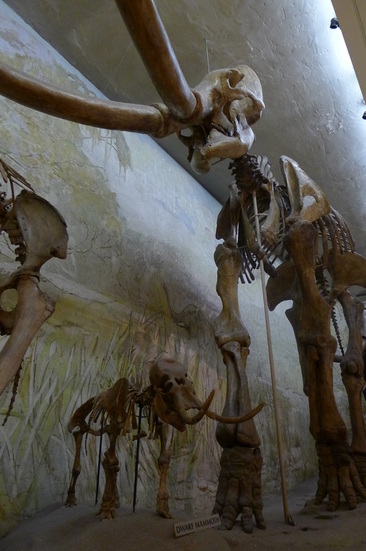
Body size is one of the most fundamental organism traits. It is connected statistically to a huge range of other traits that span nearly all levels of organization, from genes to at least population traits. In addition, body size itself presents many interesting patterns in space and time, such as increases in body size through evolutionary time, increasing size with latitude and cold, smaller or larger sizes on islands, and dwarfism and gigantism. Why do these patterns exist, and what sets body size? This question is fundamental to the workings of nature, as setting size has consequences for so many other processes and patterns.
My primary approach to understanding body size evolution is to focus on the idea that observed body sizes maximize resource use given environmental constraints. I have formalized this idea with the supply-demand model of body size evolution, which provides a very simple way to predict changes in size with a variety of possible forces that influence either the supply of resources or the demand for resources. So far, this model has been very successful at explaining patterns of variation in body size, and I continue to explore this concept in a variety of systems and to understand a variety of patterns.
See:
DeLong, J.P. , T.C. Hanley, and D.A. Vasseur. In press. Predator-prey dynamics and the plasticity of predator body size. Functional Ecology.
DeLong, J.P. 2012. Experimental demonstration of a rate-size trade-off governing body size optimization. Evolutionary Ecology Research. 14:343-352.
My primary approach to understanding body size evolution is to focus on the idea that observed body sizes maximize resource use given environmental constraints. I have formalized this idea with the supply-demand model of body size evolution, which provides a very simple way to predict changes in size with a variety of possible forces that influence either the supply of resources or the demand for resources. So far, this model has been very successful at explaining patterns of variation in body size, and I continue to explore this concept in a variety of systems and to understand a variety of patterns.
See:
DeLong, J.P. , T.C. Hanley, and D.A. Vasseur. In press. Predator-prey dynamics and the plasticity of predator body size. Functional Ecology.
DeLong, J.P. 2012. Experimental demonstration of a rate-size trade-off governing body size optimization. Evolutionary Ecology Research. 14:343-352.
